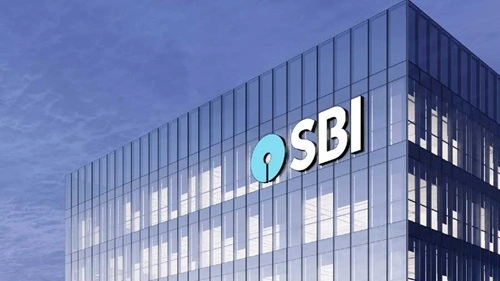The State Bank of India (SBI), India’s oldest and largest public sector bank, plays a critical role in the country’s banking sector. With a history spanning over two centuries, SBI has established itself as a trusted brand and a leading player in retail and corporate banking, wealth management, digital banking, and financial services. Despite its dominant position in India’s banking landscape, SBI operates in an increasingly competitive and evolving industry, facing both opportunities and challenges. This SWOT (Strengths, Weaknesses, Opportunities, Threats) analysis explores SBI’s current market position and provides insights into its future outlook.

Strengths
1. Dominant Market Position and Extensive Reach:
SBI is India’s largest bank by assets, market capitalization, and branch network. With over 24,000 branches, 59,000 ATMs, and nearly 450 million customers, SBI has an extensive reach across urban, semi-urban, and rural areas. Its vast network gives SBI a unique advantage in serving diverse customer segments, including underbanked populations in rural regions. This strong market position enables SBI to attract a substantial share of deposits and maintain a robust customer base.
2. Strong Brand Reputation and Trust:
SBI is one of India’s most trusted brands, especially among rural and middle-class consumers. Its status as a government-owned bank enhances its credibility, attracting deposits from risk-averse customers who prioritize safety. During economic uncertainties, SBI’s reputation for stability and government backing serves as a significant advantage, giving it a competitive edge over private banks, particularly in rural areas.
3. Comprehensive Product and Service Portfolio:
SBI’s extensive range of services includes retail banking, corporate banking, treasury operations, insurance, asset management, and investment banking. This diversified product portfolio enables SBI to cater to various financial needs of individuals, businesses, and government institutions. Moreover, SBI’s subsidiaries, including SBI Life Insurance, SBI Cards, and SBI Mutual Fund, offer cross-selling opportunities and additional revenue streams, strengthening its overall business model.
4. Leadership in Digital Banking:
SBI has invested significantly in digital banking, transforming its customer experience with platforms like YONO (You Only Need One), which provides a range of services from banking and shopping to investment management. With over 54 million downloads, YONO has become a popular digital banking platform in India, catering to tech-savvy customers and enhancing SBI’s presence in the digital space. This digital edge positions SBI to compete effectively with private banks and fintech companies.
Weaknesses
1. High Non-Performing Assets (NPAs):
One of SBI’s major weaknesses is its high level of non-performing assets (NPAs). As a public sector bank with a significant share of corporate lending, SBI has been burdened with bad loans, particularly from industries like power, infrastructure, and steel. While the bank has made progress in reducing NPAs through recovery efforts and provisioning, bad loans remain a concern, impacting profitability and investor confidence.
2. Bureaucratic Structure and Slow Decision-Making:
As a public sector institution, SBI’s operations are often hindered by bureaucratic red tape, which can slow down decision-making processes and limit its agility. This structural issue affects SBI’s ability to adapt to changing market conditions and hampers its competitiveness against nimble private sector and digital-first banks. Streamlining internal processes could improve operational efficiency and allow SBI to respond more swiftly to customer needs.
3. Dependence on Interest Income:
SBI relies heavily on interest income, which constitutes a significant portion of its revenue. This dependence on interest income makes SBI vulnerable to changes in interest rates and economic cycles. During periods of low interest rates or economic slowdown, SBI’s profitability can be affected, highlighting the need for the bank to diversify its revenue streams by increasing its focus on fee-based income sources, such as wealth management and investment services.
4. Challenges in Rural Outreach and Financial Literacy:
While SBI has an extensive rural network, it faces challenges in fully leveraging this reach due to low financial literacy in rural areas. Many rural customers are not familiar with advanced banking services or digital platforms, limiting the adoption of SBI’s products. This gap necessitates investment in financial education and awareness campaigns to improve rural customers’ understanding of financial products, which can enhance SBI’s engagement and customer loyalty.
Opportunities
1. Expanding Digital Banking and Fintech Collaborations:
The rapid digitization of financial services in India presents an opportunity for SBI to expand its digital banking capabilities further. By enhancing the YONO platform and leveraging emerging technologies like artificial intelligence, blockchain, and data analytics, SBI can attract tech-savvy customers and improve operational efficiency. Collaborating with fintech companies could also help SBI develop innovative products, such as digital lending solutions, and reach new customer segments.
2. Growth Potential in Retail Banking and Personal Loans:
With increasing urbanization, rising disposable incomes, and a growing middle class, there is substantial demand for retail banking products like home loans, personal loans, and credit cards in India. SBI’s strong brand reputation and extensive branch network position it well to capture this demand. Expanding its retail banking services and cross-selling products through its subsidiaries can help SBI grow its revenue and reduce dependency on corporate lending.
3. Financial Inclusion and Expansion into Semi-Urban and Rural Markets:
The Indian government’s focus on financial inclusion aligns well with SBI’s mission, providing an opportunity for the bank to expand its presence in underserved markets. By offering affordable products and promoting digital banking in rural areas, SBI can attract new customers and increase financial literacy. Enhancing its rural outreach and collaborating with government programs could further strengthen SBI’s role in financial inclusion.
4. International Expansion and Growth in NRI Services:
With an increasing Indian diaspora, there is rising demand for NRI (Non-Resident Indian) banking services. SBI has an opportunity to expand its international presence, particularly in markets with significant NRI populations, such as the Middle East, North America, and Southeast Asia. By offering specialized products and services for NRIs, including remittances and investment solutions, SBI can tap into this lucrative market and grow its foreign income base.
Threats
1. Intense Competition from Private Banks and Fintech Companies:
SBI faces intense competition from private sector banks like HDFC Bank, ICICI Bank, and Axis Bank, which are known for their customer service, agility, and innovative products. Additionally, fintech companies and digital-first banks are challenging traditional banking models by offering user-friendly, technology-driven solutions. This competition pressures SBI to continuously innovate and improve its digital offerings to retain and attract customers.
2. Regulatory and Compliance Challenges:
As a public sector bank, SBI operates in a heavily regulated environment. Regulatory changes, such as the Reserve Bank of India’s guidelines on capital adequacy, lending practices, and loan moratoriums, can impact SBI’s operations and profitability. Compliance costs are also increasing, as the bank needs to meet strict standards on anti-money laundering (AML), data privacy, and customer protection, which can strain its resources.
3. Economic Slowdowns and Credit Risks:
SBI is sensitive to economic fluctuations, and an economic slowdown can lead to reduced loan demand and increased risk of defaults. The COVID-19 pandemic, for instance, led to a rise in NPAs across the banking sector, impacting profitability. As India’s economy recovers, SBI must manage credit risks carefully, especially in sectors vulnerable to economic cycles, to avoid further accumulation of bad loans.
4. Cybersecurity and Data Privacy Risks:
With the rise of digital banking, SBI faces significant cybersecurity and data privacy risks. As cyber threats become more sophisticated, protecting sensitive customer information and ensuring secure digital transactions is paramount. Any data breach or security incident could lead to reputational damage, regulatory penalties, and loss of customer trust. Investing in robust cybersecurity measures is essential for SBI to maintain customer confidence in its digital platforms.
Future Outlook
The future outlook for SBI is promising, supported by India’s growing economy, rising demand for digital banking, and government-backed financial inclusion initiatives. SBI’s leadership in retail banking, strong brand presence, and extensive branch network provide a solid foundation for sustainable growth. The bank’s focus on expanding digital banking through platforms like YONO, along with its partnerships with fintech firms, will be critical in staying competitive in an increasingly digital landscape.
SBI’s expansion into rural and semi-urban areas aligns well with the Indian government’s drive for financial inclusion. By educating customers and offering affordable financial products, SBI can deepen its reach in underserved markets and tap into new customer segments. The bank’s ability to expand NRI services and capture demand from the Indian diaspora will also contribute to its growth in international markets.
However, addressing weaknesses like high NPAs, bureaucratic inefficiencies, and heavy reliance on interest income is crucial for long-term stability. SBI must continue its efforts to manage credit risk, streamline operations, and diversify revenue sources. Adopting a more agile, customer-centric approach can help SBI compete effectively with private banks and fintech companies, which are known for their service efficiency and digital innovation.
Furthermore, as environmental and social governance (ESG) considerations gain traction, SBI has an opportunity to enhance its reputation by adopting sustainable banking practices, promoting green financing, and supporting clean energy projects. These initiatives would align SBI with global standards and strengthen its appeal among socially conscious investors and customers.
In conclusion, SBI’s strengths in brand loyalty, extensive reach, and digital innovation provide a strong platform for future growth. By addressing its weaknesses, leveraging growth opportunities, and managing external threats, SBI can continue to lead India’s banking industry. With strategic focus on digital transformation, risk management, and financial inclusion, SBI is well-positioned to navigate challenges and capture growth in India’s evolving financial landscape.

